Transparency is no longer a “nice to have” quality for food companies—it’s mandatory. Today’s consumers want to know as much as possible about what they’re eating: 65 percent say it’s important to understand how their food is produced, 51 percent want clear and accurate labeling, and 47 percent want clear information on ingredients and sourcing.
The most effective food organizations are using marketing materials to communicate key information consumers want to know and build deep customer loyalty. Here are five brands that are showing customers that food transparency is a major business priority.
1. HAPPY FAMILY
Happy Family, an award-winning producer of organic baby and toddler foods, values “enlightened ingredients” and aims to help parents make informed decisions. On its website, product pages offer nutritional information, along with known allergens and fun facts (“Did you know: Kale has been cultivated for over 2,000 years!”).
Taking transparency quite literally, Happy Family’s Clearly Crafted baby foods line comes in clear packaging and features not only the product’s ingredients and nutritional values, but also the actual recipe for the baby food. The Happy Farms page uses beautifully made videos to highlight the farms that produce Clearly Crafted fruits and vegetables.
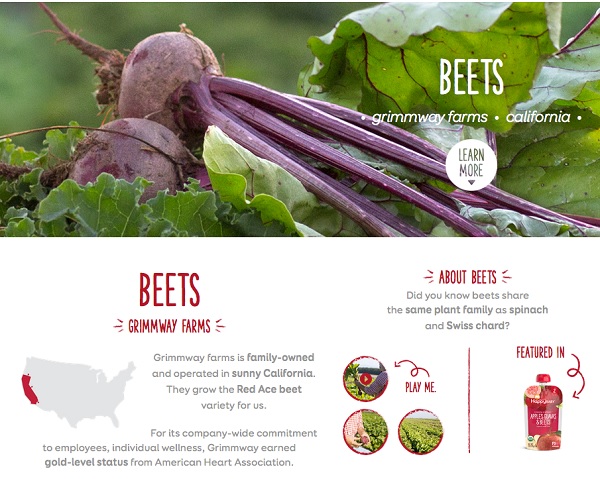
Image source: Happy Family
2. SPROUTS FARMERS MARKET
Health food grocer Sprouts has grown to more than 220 stores nationwide with smaller-than-average footprints and an emphasis on fresh foods. With a dedicated food recalls section, their website communicates timely food quality and safety information.
Along with food quality and safety, the Center for Food Integrity’s 2015 Consumer Trust Research report identified environmental impact, labor and human rights, and animal well-being as categories that matter greatly to the public. Sprouts addresses these concerns directly with content explaining supplier and sourcing strategies; programs around food rescue, composting, recycling and other environmental efforts; green building practices; and community outreach.
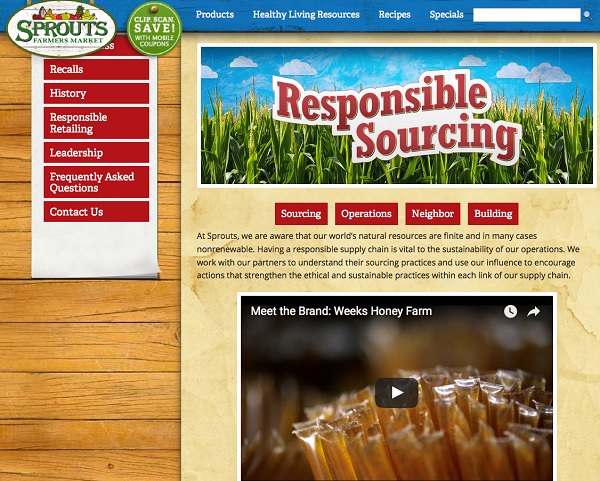
Image source: Sprouts Farmers Market
3. FISHPEOPLE SEAFOOD
Fishpeople proclaims “relentless transparency” and weaves a message of whole-path ingredient and food supply chain traceability throughout its website. The Pacific Northwest company produces prepackaged, locally sourced seafood entrees, each with a code that allows you to use an online Track Your Pouch feature to learn the story behind every ingredient.
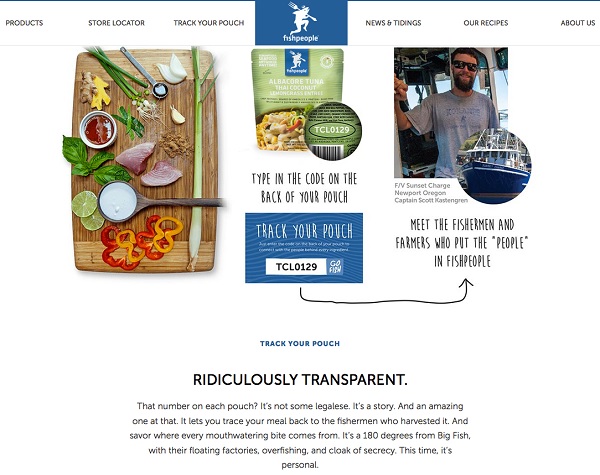
Image source: Fishpeople Seafood
Track Your Pouch doesn’t just reveal farming and fishing sources; it also shares the names of suppliers responsible for other steps in the chain, like chopping, washing, freezing and processing.

Image source: Fishpeople Seafood
The Fishpeople blog features a “pole to plate” video story for an albacore tuna entree and a short profile of the company's director of business development and sourcing. The content is fun, engaging and full of personality, and it drives home Fishpeople’s dedication to sustainable sourcing and production practices.
4. ONE DEGREE ORGANIC FOODS
Organic cereal and bread producer One Degree Organics professes values like sustainability, simplicity and organic farming, and shows how it’s putting these values into action through its supplier choices.
Like Fishpeople, One Degree’s website features an ingredient tracker that allows you to scan a package code and see the source of each ingredient in the product. You can then dive deeper into specific ingredients with a short video profiling the producer and photos of the farm. A sidebar introduces different One Degree farmers, inviting visitors to “See my farm” to learn about location and farming practices.
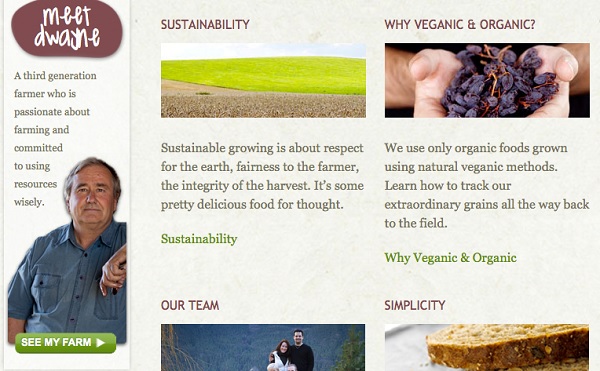
Image source: One Degree Organic
5. PANERA BREAD
Panera has emphasized ingredient transparency for years, as one of the first food companies to provide calorie counts on menu items and remove antibiotic-treated animal proteins from its menu. In addition to publishing its “No-No List” of more than 80 ingredients it will no longer use, in 2014 Panera published a “Food Policy Statement” that outlines the company’s goals to use clean ingredients, provide menu transparency and make a positive impact through responsible supplier choices and community outreach. Company leaders have also been vocal about recent efforts to step up food safety audits throughout Panera’s supply chain.
Panera uses videos, articles, press releases and reports to communicate its transparency efforts. The company keeps the public updated on progress toward goals through content like the animal welfare infographic.
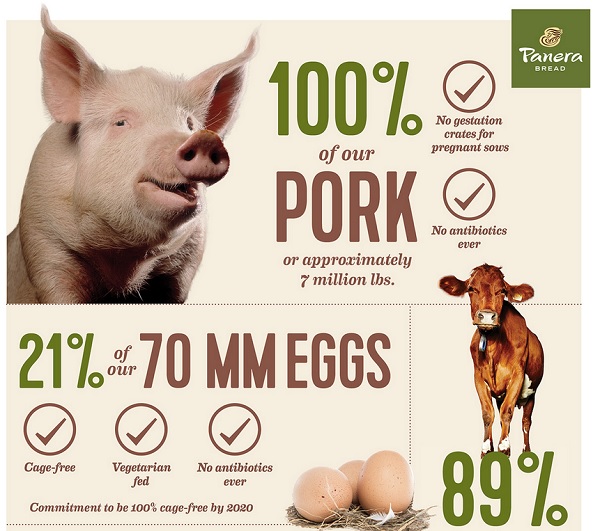
Image source: Panera Bread
Use these examples to spark your own ideas for ways your company can communicate with greater transparency through its website, blog, social media content and other marketing activities. The payoff in customer trust and loyalty will be well worth the effort.
Transparency that breeds customer loyalty starts with deep knowledge of your supply chain. Take a step toward supply chain visibility with our free guide, Selling the C-Suite on Supply Chain Traceability Software.
Tag(s):
Supplier Compliance
Other posts you might be interested in
View All Posts
Food Industry
6 min read
| September 15, 2016
Why Consumers Will Pay More for Complete Transparency
Read More
Food Safety
5 min read
| September 1, 2016
The Case for Food Ingredient Transparency
Read More
Food Industry
5 min read
| August 8, 2018

